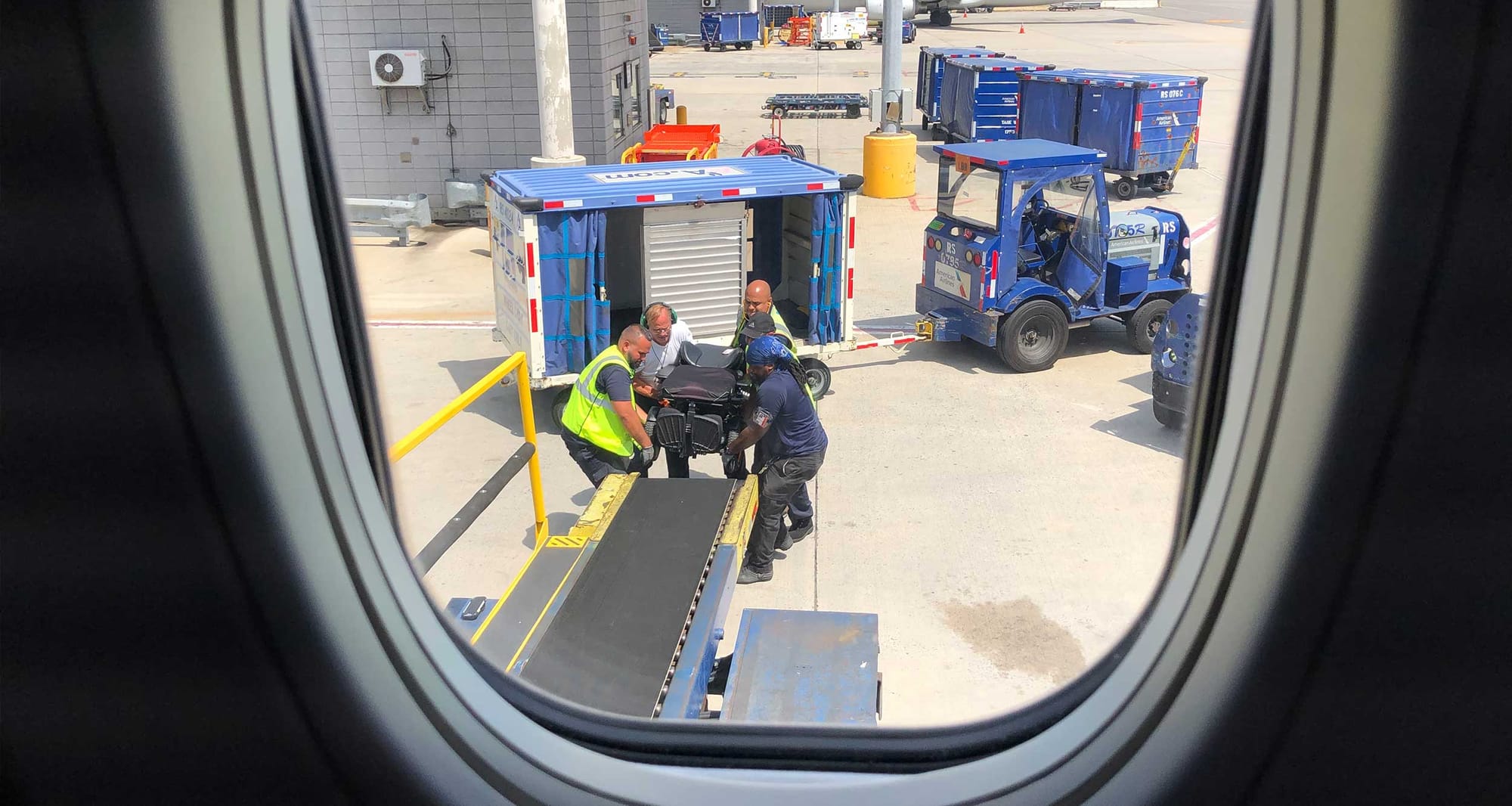
What can I do to make sure airlines won’t damage my personal wheelchair?
Airlines do, on occasion, damage the personal wheelchairs of travelers with disabilities. I have been a victim of this myself, but it has happened only a handful of times in more than 300 flights.
There are ways to reduce the risk of your wheelchair being damaged on the course of your journey. Follow these tips to make sure that your wheelchair arrives in one piece:
Stow your manual wheelchair in the aircraft cabin.
Most aircraft have a closet that can accommodate one collapsible wheelchair. If you are traveling with a manual wheelchair, ask for it to be stowed in this closet. Wheelchairs stored underneath the airplane in its cargo compartment are much more likely to be damaged by shifting baggage.
If your wheelchair has to be stored in the cargo hold, remove loose objects.
If you are traveling with a large, non-collapsible, or powered wheelchair that will not fit in the aircraft cabin, be sure to remove attachments that cold be damaged or lost beneath the plane. These include seat cushions, cupholders, foot and armrests, side guards, bags, tray tables, oxygen attachments, etc. All such attachments should be carried onto the plane with you, where they will be safe from damage.
Attach instructions on how to handle and operate power wheelchairs.
Baggage handlers are not power wheelchair engineers, so you’ll need to provide instructions on how to care for the chair. Particularly important are details on how to power-on/off the chair, how to set it to free-wheel mode, and where the chair should be lifted. I’ve seen my 200-pound power wheelchair lifted from its plastic armrests many times – be sure to instruct the airline on where the chair can be safely lifted.
You can (and should) provide this information to the baggage handlers and gate agent at your point of departure. The problem is – the staff at your destination will not have this information. I recommend attaching detailed instructions to your wheelchair, printed on a laminated sheet of paper. A damaged wheelchair is not good for you or the airline, and printed instructions can go a long way to preventing such an incident.
Watch this short video, which shows how airlines load powered wheelchairs into the aircraft’s cargo hold:
Bring the tools needed to disassemble your wheelchair (if necessary).
If your seatback will need to be folded forward to fit, bring the tools necessary and instruct the airline how to handle the disassembly. They are more than happy to help, and are required to do so by the Air Carrier Access Act.
Given the frequency with which I travel, I worked with my local wheelchair repair shop to fashion a pin that can be easily removed to collapse the seatback.
If the baggage handlers are unable to make your wheelchair fit into the cargo hold upright, it will have to be stowed on its side. This is not good for any power wheelchair. Be prepared with the tools and instructions for disassembly.
Recommendations From An Airline Executive
I reached out to a Delta Air Lines official for comments that I could share with my readers on this topic. Specifically, I asked about ways that passengers and airlines can work together to minimize damage (emphasis mine):
…engagement with Delta regarding how to best handle and transport a wheelchair would really help us…you know personally that we need specific details on the device and then we need to be able to communicate these details to the next station. Coupled with more training for our people on loading and securing the chair, I’m confident that we will make progress in this area.
As you saw in the video above, there are a lot of people involved in the handling of your wheelchair. Ground staff and gate agents need to be informed on how best to lift your chair. If the wheelchair needs to be collapsed, it will be your responsibility to provide instructions on how to do that. At the end of the day, a wheelchair is baggage, and instructions on its care must come from you, the traveler.
I also spoke to my contact at Delta about the cost of damaging a wheelchair. I received an interesting response (emphasis mine):
Damage to a customer’s wheelchair definitely impacts the bottom line…As you know, the damage to our brand is far more costly than any expense involving the repair of a chair. What people think of Delta as a high quality airline is everything.
In this social media world, an airline’s failure to promptly repair a wheelchair or mobility device could “go viral” in an instant. A recent failure of service by United Airlines in Washington, D.C. went viral, which led me to write a response, 3 Takeaways from United Airlines’ Disability Services Failure. Bad PR negatively affects the bottom line, and airlines (typically) try to prevent such situations from arising.
Conclusion
In 2015, at the meeting of the Delta Air Lines Advisory Board on Disability, the airline announced that 3.34 of every 100 wheelchairs they transported were damaged in 2014. This figure was much lower than I expected. Contrary to the discussion within disability groups, though, wheelchairs are not “tossed around” like standard baggage. I haven’t met a man who can toss a 200-pound powered wheelchair!
Most damage to wheelchairs at airports and on airplanes is accidental. Damage can also be the result of negligence. In the video I shared, you saw a Detroit baggage handler offload my 200-pound wheelchair by himself – that was negligent, and just plain stupid. Power wheelchairs such as mine should be lifted by 4 people, but even then, accidents can happen.
The earlier you inform airlines of your plans to travel with a power wheelchair, the more time they will have to prepare. Similarly, a complete set of instructions for handling your device should be attached to your wheelchair. Handling instructions increase the odds (which are already good!) of your chair coming back in one piece.
Airlines face two costs when they damage mobility equipment: to their financial bottom line and to their reputation. At least with regard to handling your wheelchair, the airlines are not out to cause you harm. The strict requirements of the ACAA ensure there will be an unavoidable cost if your chair is not returned in the same condition.



